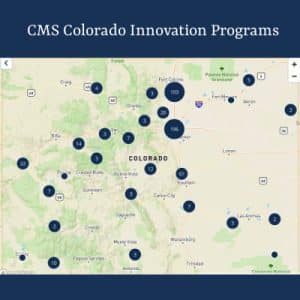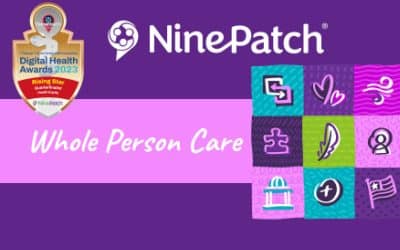SDOH and Care Coordination Programs and Funding

SDOH care coordination and funding is available from federal, state, and a variety of other programs. Health equity and social determinants of health are receiving increasing attention from CMS specific to reimbursements for assessments and community care coordination across physical, behavioral, mental health and social domains. Learn about the flow of funding from federal to state programs to support community collaboration..
Federal Budgets for SDOH Programs
Efforts to support social determinants of health (SDOH) and care coordination programs begin with the federal budget, the U.S. Department of Health and Human Services (HHS), the Centers for Medicare and Medicaid (CMS) and a variety of other federal programs that eventually trickle down to state and local levels.
Grants from agencies like the CDC, legislation like the American Rescue Plan Act (ARPA), federal match funding, waivers, foundations, and private donors also address sdoh concerns. These funding efforts support progress toward improving social risk factors that impact health.
The challenge is that many of these programs are siloed in a variety of agencies and departments at federal and state levels. Cross-agency collaboration that combines funding and goals can advance sdoh assessments and care coordination efforts to address whole person care.
Collaboration, Partnerships, and Funding
Cross-agency collaboration that combines funding and shared goals can fast-track improved health outcomes, but many challenges exist.
- Federal and state agencies and departments have programs that overlap in some areas but not others.
- Programs can have precise requirements and timelines that are inflexible and prevent collaborative efforts.
- State legislation originating from one health or human services agency may not consider other legislation or programs underway. As a result, efforts are duplicated.
- As an organization, you may not know where to start to identify similar programs or organizations working on similar efforts.
Some states have made considerable progress in cross-agency and cross-sector collaboration. State departments of Health and Human Services, Medicaid agencies, managed care organizations, and health systems are increasing focus on health equity.
As the result of federal and state funding, health information exchanges (HIEs) and community-based organizations (CBOs) are working together. For example, North Carolina with the Healthy Opportunities Pilots, California with CalAIM, and New York are using section 1115 waivers and demonstrations to address sdoh and care coordination programs.
NinePatch® SDOH software solutions support state and local initiatives for care coordination and closed loop referrals. NinePatch also offers Community Convener Services for organizations who need support in developing financially sustainable programs. Schedule a demo to learn how these programs support clinical and community care.
You may be aware that healthcare policy varies by state. This article offers background about federal programs and funding for health care that can translate to state sdoh and care coordination programs. The goal is to inspire discussions and collaboration around healthcare policy, cross-agency partnerships, and funding opportunities for sdoh and care coordination. In the sections below, you will find:
- Information about HHS and specialized departments that offer funding for sdoh and care coordination programs.
- Agency specific programs so that you can see funding pathways from federal to healthcare agency, division, and state initiatives.
- Examples of Colorado programs that begin at the federal level and address local concerns. Links to funding sources are provided so that you can research similar programs in your state.
U.S. Department of Health and Human Services (HHS) 2024 Funding
Let’s start at the top of the funnel, to follow the money for sdoh and care coordination program initiatives from federal to state levels. The 2024 Federal Budget funds the Department of Health and Human Services, the Social Security Administration, the Departments of Defense, Education, Transportation, and other agencies.
The federal budget segments funding for these operating divisions.Specific to healthcare, the President’s Fiscal Year 2024 Budget advances the Department of Health and Human Services’ (HHS) mission to promote Americans’ health and well-being.
In FY 2024, the proposed HHS budget includes $144.3 billion in discretionary and $1.7 trillion (about $5,200 per person in the U.S.) in mandatory funding. To see how this breaks out, The Fiscal Data Treasury Calculator offers a view of the HHS budget by operating divisions and provides year-to-date spending.
HHS Operating Divisions and Agencies
The Department of Health and Human Services includes twelve operating divisions, including nine agencies in the U.S. Public Health Service and three human services agencies,
Below is a list and links to organizations that mention social determinants of health in their budgets and offer funding opportunities. Depending on your healthcare sector, one or more of these organizations may offer opportunities to support sdoh and care coordination programs.
1 Administration for Children and Families (ACF)
The Administration for Children & Families promotes the economic and social well-being of families, children, individuals, and communities through various educational and supportive programs in partnership with states, tribes, and community organizations.
2 Administration for Community Living (ACL)
The Administration for Community Living increases access to community support and resources for the unique needs of older Americans and people with disabilities by funding services and supports provided primarily by networks of community-based organizations and research. The ACL frequently announces grant funding opportunities. For example in 2023, a grant to improve support for family caregivers,.
3 Agency for Healthcare Research and Quality (AHRQ)
The Agency for Healthcare Research and Quality’s mission is to produce evidence to make health care safer, higher quality, more accessible, equitable, and affordable, and to work within HHS and with other partners to ensure the evidence is understood and used.
4 Centers for Medicare & Medicaid Services (CMS)
The Centers for Medicare & Medicaid Services combines the oversight of the Medicare program, the federal portion of the Medicaid program and State Children’s Health Insurance Program, the Health Insurance Marketplace, and related quality assurance activities. CMS regularly releases program information. You can sign up on the CMS website to receive updates about programs of interest to you.
5 Health Resources and Services Administration (HRSA)
The Health Resources and Services Administration, part of the Public Health Service, provides health care to people who are geographically isolated, economically, or medically vulnerable. Sign up for HRSA News to learn about programs, funding opportunities, and events.
6 Indian Health Service (IHS)
The Indian Health Service, part of the Public Health Service, provides American Indians and Alaska Natives with comprehensive health services by developing and managing programs to meet their health needs.
7 Office of the National Coordinator for Health Information Technology (ONC)
ONC provides counsel for developing and implementing a national health information technology framework.
8 Substance Abuse and Mental Health Services Administration (SAMHSA)
The Substance Abuse and Mental Health Services Administration, part of the Public Health Service, improves access and reduces barriers to high-quality, effective programs and services for individuals who suffer from or are at risk for addictive and mental disorders, as well as for their families and communities.
CMS Pilot, Demonstration, and Innovation Programs
CMS regularly releases rules, demonstrations, and innovation programs that flow down to state levels. These programs test the feasibility of clinical and social initiatives on a small scale that can eventually lead to widespread implementation.
For example, the CMS Proposed Rule Physician Fee Schedule for 2024 offers G-Codes as a mechanism to support reimbursements to clinical and community health workers for standardized sdoh assessments and community health and social care integration and coordination.
Additionally, on July 31, 2023, CMS released the “Guiding an Improved Dementia Experience (GUIDE) Model” to support people with dementia and their unpaid caregivers.
CMS programs at the state level often focus on prioritizing care for Medicaid and Medicare populations. These efforts occur through complex care management (CCM), home and community-based services (HCBS), and in lieu of services (ILOS) programs, among others.
For example, the California Medicaid program, CalAIM, identifies the following persons as priorities:
- Individuals with behavioral health, mental illness, and substance use disorders
- Seniors and people with disabilities, including persons with dementia and their caregivers
- Persons transitioning from jails or prisons with behavioral health or physical needs.
- Children with complex medical conditions
- Children and youth in foster care
As one might imagine, common threads exist between the priorities and populations identified for Medicaid and Medicare programs. For example, one common thread might be Whole Person Care (WPC) Models that integrate physical, mental, and behavioral health with social care programs.
So, to begin investigating sources of funding and programs that may overlap in states and how your organization can participate, below are a few starter questions:
- What organizations in your state might provide funding for services and programs offered by your organization? What are the funding requirements? What are the funding cycles or deadlines?
- How can organizations focusing on specific populations work together to combine efforts and funding? What organizations might be potential collaborators or partners?
- What structural, budget, or program constraints exist that might make collaboration difficult across organizations, agencies, or government entities challenging. How can these constraints be resolved?
- What role do state legislators play in healthcare funding and program development? How can organizations educate legislators about the needs of local populations so that funding goes further and achieves common goals?
Federal to State Funding
At the federal level, the Department of Health and Human Services manages programs that trickle down to states that focus on their populations’ needs. By becoming aware of the extent of federal programs available, states and organizations can proactively identify paths to collaborate and improve outcomes for patients and consumers.
To support this approach, in response to a request for information from the Congressional Caucus for Social Determinants of Health, the Center for American Progress (CAP) outlined challenges in addressing social and economic conditions. CAPs 2022 report cited sdoh concerns that affect health and recommended actions that Congress can take. These recommendations include breaking down federal and state silos to encourage cross-agency collaboration.
The Accountable Health Communities Model (AHCM) Pilot Program
Let’s look at a program by CMS that was piloted and implemented across more than twenty states. An article in the New England Journal of Medicine, Accountable Health Communities — Addressing Social Needs through Medicare and Medicaid from January 2016, shares the history of this program.
Over five years, the Accountable Health Communities Model supported community bridge organizations to test promising service delivery approaches to link beneficiaries with community services that may address their health-related social needs (HRSNs). As of April 2022, twenty-eight organizations were participating in the program..
SDOH Screening: The AHCM on the Western Slope of Colorado
The AHCM pilot program initiated in western Colorado offers a success story of the efforts of a payer, Rocky Mountain Health Plans (RMHP), and a health information exchange, Quality Health Network.
As part of the pilot program initiated in 2018, Rocky Mountain Health Plans (RMHP) in western Colorado wanted to create a culture shift among clinical providers to prioritize beneficiaries’ health-related social needs (HRSN) and clinical needs.
Through this effort, Quality Health Network (QHN), headquartered in Grand Junction, Colorado, established a community-based network—Community Resource Network (CRN). The results of QHN and CRN’s participation in the AHCM model continue today and illustrate the success of screening and referrals for social determinants of health.
In 2023, CRN was included in the Office of the National Coordinator (ONC) Social Determinants of Health Toolkit. ONC offered the western Colorado community network as a resource and an example of a model for SDOH community information exchange initiatives.
Through the AHCM, RMPH partnered with community organizations to promote HRSN screening, patient navigation workflows, and referrals. Between February 2018 and June 2023 through participation with QHN and CRN 136,361 screeners were completed by community organizations. The top needs of screener participants were food, housing, social isolation, and transportation.
Identifying CMS Innovation Programs in Your State
If you want to learn about state CMS Innovation programs in your state, review the Model Map for information. An example of the Model Map for the state of Colorado is provided below so that you can see the extent of available programs and opportunities.
Following Federal to State Money: Colorado Healthcare Initiatives
Let’s look at a short list of additional Colorado programs. Note that those listed do not include foundation grants for clinical or community-based organizations or other programs that may be population specific. However, one example of a non-profit health plan funding a non-profit health system is provided.
These examples paint a picture of programs that might have overlapping goals. Information you may discover through similar research may confirm collaboration opportunities for integrated programs like Whole Person Care or sdoh screening and care coordination. The programs described below are created by state agencies like Behavioral Health and the Office of Community Living that operate in many states.
The Colorado Landscape: Grand Junction to Denver
Depending on the geography in your state, you may be aware that populations have diverse needs based on socio-demographics and health. Colorado has a broad physical landscape with densely populated and low-density areas. For example:
- The city of Grand Junction (population 66,964) sits on the state’s western slope. In the middle of the state are rural ranches, fourteen-thousand-foot mountain peaks, ski resorts, and the Continental Divide.
- About an hour’s travel east of the Continental Divide is the Front Range comprised of the Denver metropolitan area (population approximately 3 million) with Ft. Collins (population 359,066) to the north and Colorado Springs (population 755,105) to the south.
- The Front Range to the west and east of Interstate I-25, north to Wyoming, and south to New Mexico, represents about 70% of the state’s population.
HHS 2024 Funding Allocated to Colorado
Funding allocated from the U.S. Department of Health and Human Services to Colorado can be identified in the state’s healthcare budget. The 2024 Colorado budget for health care is 14 billion dollars—9 billion of which are federal funds.
The $14 billion dollars in state funding includes:
- Medical Services Premiums ($10.5 billion)
- Behavioral Health Community Programs ($1.13 billion)
- Office of Community Living ($976.16 million)
- Executive Director’s Office ($499.6 million)
- Other Medical Services ($494.7 million)
- Indigent Care Program ($468.7 million)
- Department of Human Services Medicaid ($127.6 million)
Colorado Federal Healthcare Funds and CMS Innovation Programs
Next, let’s look at the CMS Innovation Programs in Colorado and the amount of funding provided by federal programs in addition to the state of Colorado Budget. As you will see below, in addition to $9 billion in federal funds in the state of Colorado budget, an additional $23 million has been allocated through CMS Innovation programs across 500 programs operating in Colorado.
To offer a perspective, the CMS Innovation program funding of $23 million is more than the entire state of Colorado healthcare budget allocated by the Joint Budget Committee (JBC) of $14 billion.
Federal Funding for Healthcare in Colorado: CMS Healthcare Innovation Awards

CMS is providing an additional $23 million in funding for Colorado specific innovation programs. Other programs shared among Colorado and other states receive are listed below, however funding amounts are not identifiable by state.
Denver Health and Hospital Authority Colorado, a safety net hospital and health system, is receiving the bulk of these funds of almost $20 million.
Additionally, to give an example of programs not included in the CMS innovation awards, a Kaiser Permanente press release from May 2023 confirms funds of up to $10 million to assist Denver Health with uncompensated care programs.”
A map of the 500 CMS innovation programs in Colorado, pictured at the left, shows the location of the programs as well as the organizations implementing the programs.
You can research programs in your state using the same map program.
1 Denver Health and Hospital Authority – CO $19,789,999
Integrated Model of Individualized Ambulatory Care for Low-Income Children and Adults
2 Institute for Clinical Systems Improvement – CA, CO, MA, MI, MN, PA, WA, WI $17,999,635
Care Management of Mental and Physical Co-Morbidities: A Triple Aim Bulls-Eye
3 Rutgers, The State University of New Jersey (The Center for State Health Policy) – CA, CO, MO, PA $14,347,808
Sustainable High-Utilization Team Model
4 Southeast Mental Health Services – CO $1,875,000
Tipping Point Total Integration, Patient Navigation, and Provider Training for Powers County, Colorado
5 Trustees of Dartmouth College $26,172,439 – CA, CO, ID, IA, ME, MA, MI, MN, NH, NJ, NY, OR, TX, UT, VT, WA, $26,172,439
Engaging Patients Through Shared Decision-Making Using Patient and Family Activators to Meet the Triple Aim
6 University of North Texas Health Science Center – CO, FL, KS, TX $7,239,714
Brookdale Senior Living (BSL) Transitions of Care Program
7 Upper San Juan Health Service District – CO $1,724,581
Southwest Colorado Cardiac and Stroke Care
In Colorado, organizations like the Colorado Health Foundation, the Colorado Health Institute, the Bell Policy Center, and the Colorado Consumer Health Initiative advocate for health equity, affordability, and quality, integrating systems of care and economic mobility. Similar organizations in your state may be a starting point to investigate legislation and the agencies involved in creating programs. Many of these organizations have monthly meetings or other opportunities for involvement.
How State Legislation Can Support Collaboration
You may be aware of legislation in your state that supports funding and creates programs for for cross agency-collaboration. However, healthcare stakeholders and the public must consider the unintended consequences of the proposed legislation. While health care should be about people and their needs, the reimbursement structure of the healthcare industry often views people or patients as data.
Patients and consumers can have a voice when included in discussions with healthcare professionals, businesses, state, and local governments. Let’s look at an example in Colorado of where a state public health program might collaborate with a Medicaid program if stakeholders were directed to work together.
The Intersection of Behavioral Health Programs in Colorado
In response to escalating behavioral health needs, Colorado Senate Bill 22-1278 was passed. The act (SB 22-1278) created the Behavioral Health Administration (BHA) in the Department of Human Services to create a coordinated, cohesive, and effective behavioral health system in the state.Two other projects, the ACC Phase III and SB 22-1302, described below, overlap in the areas of primary care and behavioral health.
The establishment of the Behavioral Health Administration and the ACC Phase III project is one example of similar programs with an overlap that might potentially work together if the legislation enacted was flexible in its approach and required collaboration with co-occurring behavioral health initiatives.
Per 22-1278, the BHA will handle most of the behavioral health programs that the Office of Behavioral Health previously handled. The act establishes a commissioner as the head of the BHA. It authorizes the commissioner and state board of human services to adopt and amend rules previously promulgated by the department’s executive director.
By July 1, 2024, the act requires the BHA to establish:
- A statewide behavioral health grievance system;
- A behavioral health performance monitoring system;
- A comprehensive behavioral health safety net system;
- Regionally-based behavioral health administrative service organizations;
- The BHA as the licensing authority for all behavioral health entities and
- The BHA advisory council to provide feedback to the BHA on the behavioral health system in the state.
The act transfers to the Department of Public Health and Environment, which focuses on public health, responsibility for community prevention and early intervention programs previously administered by the department.
Another Colorado agency, the Department of Healthcare Policy and Financing (HCPF), oversees the Colorado Medicaid Program and is working on a behavioral health project called the Accountable Care Collaborative Phase III. Priorities mentioned in early discussions for ACC III include establishing Whole Person Care programs by integrating physical health into behavioral health services. However, there is no mention of coordinating with mental health services.
ACC III also mentions incorporating social determinants of health by utilizing social health information exchange tools and incorporating community health workers mentioned in another Senate Bill CO SB 23-002 into the program.
Additionally, SB 22-1278 has a requirement for “regionally-based behavioral health administration service organizations.” According to the ACC Phase III, contracts with HCPF and the RAEs expire on June 30, 2025. This date is one year after the BHA deadline of July 1, 2024, to create their service organizations, illustrating a potential overlap of programs and services that might be more efficient if combined.
$29 million dollars in funding was announced for Behavioral Healthcare Integration Grants as the result of SB22-1302 for Healthcare Practice Transformation on September 5, 2023 by the Colorado Department of Healthcare Policy and Financing. to integrate primary care, mental, and substance use services.Similar to ACC Phase III the focus of these programs is in rural and frontier areas in Colorado.
The federal funding opportunities above and state program examples offer an opportunity for interested coalitions, groups, and organizations to work together to advance sdoh and care coordination programs and funding. How can states reduce program overlap to integrate new and existing legislation with new federal programs as they are announced? If this type of collaboration occurred, how might patient care and outcomes improve more rapidly?
How Can CBOs Take Advantage of SDOH and Care Coordination Programs?
Many community-based organizations struggle to maintain financially sustainable programs.By using the information in this article as a starting point to identify and understand the range of funding sources, including federal and state dollars, local foundations, grants,and opportunities for private and public partnerships, CBOs can develop a strategic plan for programs to generate ongoing revenue. .
Additionally, organizations that participate in community hubs, social care collaboratives, and other social networks can embrace the 2024 CMS reimbursement opportunities for sdoh and care coordination program expansion. Those who investigate and take advantage of this opportunity can create relationships with clinical organization to improve client and patient experiences that result in better health outcomes.
NinePatch SDOH Software Solutions Support Care Coordination & Reimbursements
If you want to learn more about the CMS 2024 sdoh reimbursement for community health workers and how NinePatch software supports collaboration and closed loop referrals across clinical and social care organizations schedule a demo today.
Stay Up To Date
NinePatch® Recognized as Quarterfinalist for the Digital Health Hub Foundation: Digital Health Awards
NinePatch is a Rising Star in the Health Equity Track KNOXVILLE,...
SDOH and Care Coordination Programs and Funding
SDOH care coordination and funding is available from federal, state,...
Whole Person Healthcare Model Insights and Opportunities
A whole person healthcare model combines physical, behavioral, and...




